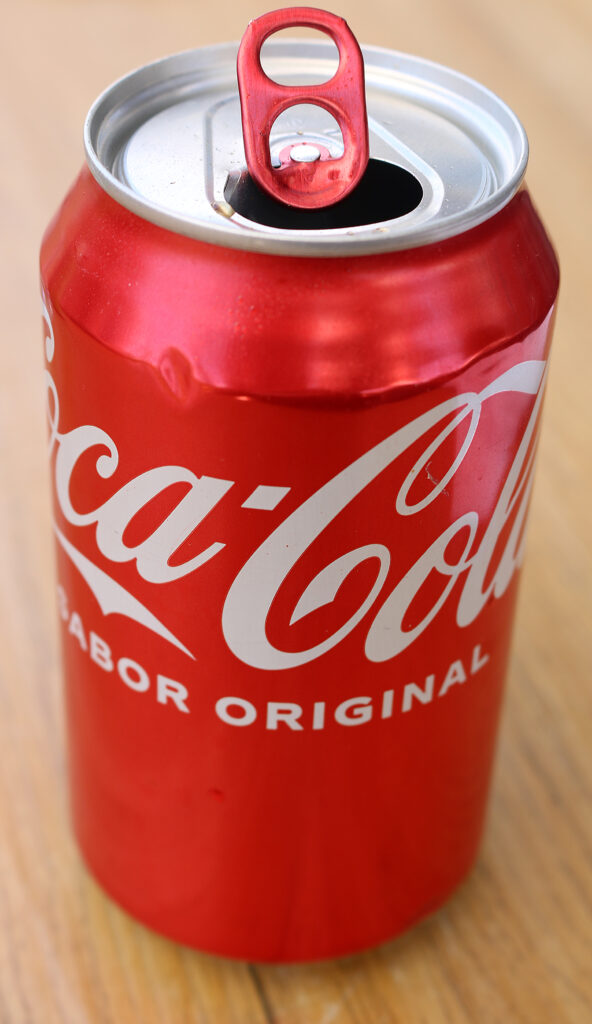People in the United States who enjoy drinking Coca-Cola believe that the soft drink tastes even better when it is manufactured in Mexico because sugar is used as the sweetener; but when I recently drank a can of Coca-Cola from Mexico, I noticed that it did not taste much differently than its brethren in the United States because among its ingredients, high fructose syrup was included in Mexican Coca-Cola.
High Fructose Syrup in Mexican Coca-Cola.
The ingredient in question that is printed on the can is azucar y jarabe de alta fructosa, which translated into English is sugar and high fructose syrup.

I have no idea if that high fructose syrup contains corn — but does that really matter?

“High-fructose corn syrup (HFCS) is a fructose-glucose liquid sweetener alternative to sucrose (common table sugar) first introduced to the food and beverage industry in the 1970s”, according to this article written by John S. White for the National Library of Medicine, which is a division of the National Center for Biotechnology Information, which itself is a division of the National Institutes of Health of the United States. “It is not meaningfully different in composition or metabolism from other fructose-glucose sweeteners like sucrose, honey, and fruit juice concentrates. HFCS was widely embraced by food formulators, and its use grew between the mid-1970s and mid-1990s, principally as a replacement for sucrose. This was primarily because of its sweetness comparable with that of sucrose, improved stability and functionality, and ease of use. Although HFCS use today is nearly equivalent to sucrose use in the United States, we live in a decidedly sucrose-sweetened world: >90% of the nutritive sweetener used worldwide is sucrose.”
High fructose corn syrup is supposedly no worse than sucrose in terms of health, according to a different article from the aforementioned National Library of Medicine from almost two years ago: “In conclusion, analysis of data from the literature suggests that HFCS consumption was associated with a higher level of CRP compared to sucrose, whilst no significant changes between the two sweeteners were evident in other anthropometric and metabolic parameters.” Rather, too much of both exists in our food supply and in our diets — neither of which is good.
Still, high fructose corn syrup — which was invented in 1957 — tends to taste sweeter than sucrose. “High fructose corn syrup is often used to sweeten foods instead of sugar because it tastes similar but is already in liquid form and doesn’t break down easily during production”, according to this article from the Nebraska Corn Board. “This byproduct of corn is readily available and cheaper than other forms of sugar. By using high fructose corn syrup instead of sugar, companies can manufacture and sell products at a lower cost.”
Final Boarding Call
I do not drink sodas and soft drinks voluminously. I prefer to have one with dinner and sometimes with lunch — although I will drink water instead of soda during those times as well — but I do prefer soda that contains sugar instead of high fructose syrup for the reason of taste.
If you enjoy drinking Coca-Cola that was manufactured in Mexico, check the label of the bottle or can first to ensure that it does not contain high fructose syrup if you prefer it with sugar.
One of the best ways to enjoy Coca-Cola with sugar is to purchase a bottle with a yellow cap, which is typically available around the Jewish holiday of Passover.
All photographs ©2024 by Brian Cohen.
